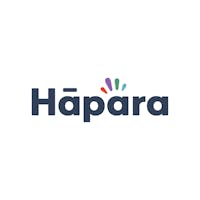In the last 10 years, technology has addressed issues in education that once seemed impossible to solve. It’s an exciting time for learners and educators. Yet, stakeholders want to know how effective these innovations are—and whether successes are repeatable.
There is no way to guarantee a flawless technology adoption, but success begins with capable decision makers at the head of educational organizations. Instructional leadership is a term that usually conjures up classroom observation and evaluation, curriculum management and monitoring. However, there is a body of research that cites empirical data directly tying increases in student achievement to strong organizational managers. Good organizational management can lead to more successful technology use, resulting in deeper learning.
Assistant Superintendent Adelee Penner of Buffalo Trail Public Schools in Wainwright, Alberta, Canada has focused on developing systems and processes that support teachers and students over the past year. This has created a community of learners that focuses on process rather than product. As a result, Penner has seen really positive changes in student achievement.

How can instructional leaders practice organizational management?
A lot of demands are placed on school district leaders—budgeting, meeting learner needs, supporting teachers—the list is infinite. The challenge lies in prioritizing these demands while keeping learners at the heart of everything, especially when it comes to technology adoption and implementation. Good leadership, strategy and vision are a start, but to impact learning, this has to trickle down to teachers. It is natural to think that district leaders should roll up their sleeves and focus directly on classroom instruction, but dedication to organizational management can actually have the biggest impact on teachers and learners. District leaders can empower principals, teachers and learners to get the most out of technology.
According to Horng and Loeb, school leaders can have a tremendous impact on teacher performance by focusing on the management of the organization. If leaders direct their attention to hiring and retention practices, professional development, and personnel assignments and procedures, working conditions and morale improve. Additionally, making sure that teachers have the resources, training and support that they need to be successful can move the needle on student achievement.
In Buffalo Trail Public Schools, school leaders have created a decision making process for the use of educational technology. After a close look at all of the software and technology deployed across the district, they realized that there were upwards of 300 applications in use! Leaders have now initiated a vetting strategy, only implementing tech that addresses a specific need. This eliminates redundancies and makes it much simpler to support and train teachers in a way that really impacts teaching and learning.
Penner says that they decided very intentionally to make Hāpara Workspace one of the official tools in the district, and they have been able to coach and support teachers to a greater extent because everyone is using the same tool. In a very short time, teachers across the district began creating learning workspaces such as the Pinball Wizard - Design Thinking STEAM Activity. In less than a year, student numbers increased in Workspace by 927 percent, which provided much needed continuity to the learning process.
What are the tools of effective organizational management?
Soliciting feedback from teachers and principals is key to determining exactly what is needed for successful outcomes and improved student achievement. Effective school leaders focused on organizational management use both site-based decision making and professional learning communities to build a real sense of collaboration.
Site-based decision making
Site-based decision making (SBDM) is a great way to enhance student achievement. It can be an effective tool to promote a consistent vision across a district. District leaders are the ultimate decision makers, but campus leaders are involved in the process to ensure those decisions are informed by fact.
SBDM committees can be used as a feedback mechanism to evaluate and reflect on instructional decisions. For example, if a district decides to begin using a cloud-based student organization tool, committees may discuss how to prepare for implementation on their individual campuses based on the needs of their students and the type of support and professional development that teachers will need.
At Buffalo Trail Public Schools, a new student organization tool, Hāpara Student Dashboard, is being rolled out to teachers and students. This will help students make sense of the many digital points of contact that they have to manage every day—assignments, due dates, calendars, messages. Thoughtful review and direct feedback to the Hāpara development team from teachers and students will ensure that the product is the right fit.
Professional learning communities
Professional learning communities (PLCs) get to the heart of what instructional decisions look like in the classroom by providing a space for dialogue and open communication. District leaders must make time for teachers to participate in PLCs on a regular basis.
In a case study on a tech integration PLC in California, teachers were able to come together regularly and share their concerns about implementing new instructional technology in a way that encouraged active learning rather than passive consumption. The collaboration allowed teachers to share student examples, problem solve and support each other in finding the best ways to learn the technology and implement it in the classroom.
Buffalo Trail Public Schools has created its own PL discussion groups with the Hāpara Community and also participates in a global community group where teachers and education leaders from over 40 countries share ideas and discuss solutions. Hāpara Workspaces focused on teacher professional learning are used districtwide to deliver professional development to teachers.
How does this influence technology adoption and implementation?
Organizational management should play a big role in the adoption and implementation of technology in a school district. Rather than focus on exactly what a tool will look like in the classroom, consider big picture goals. Student success, professional development needs and retention of innovative teachers should all be factored into technology planning. It is crucial to make decisions about these issues so that leaders like Adelee Penner can support their teachers.



